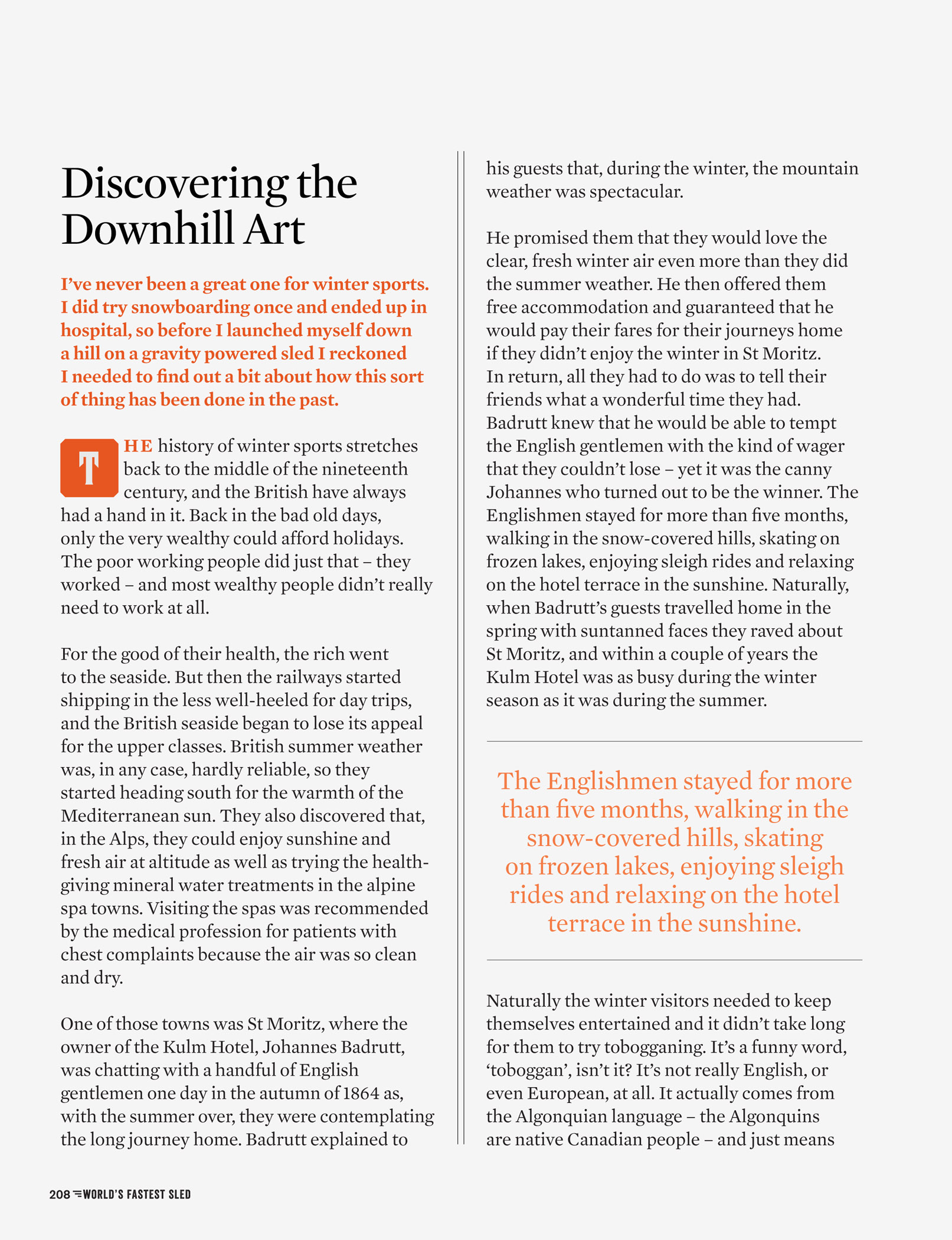
Discovering the
Downhill Art
I’ve never been a great one for winter sports.
I did try snowboarding once and ended up in
hospital, so before I launched myself down
a hill on a gravity powered sled I reckoned
I needed to find out a bit about how this sort
of thing has been done in the past.
HE history of winter sports stretches
back to the middle of the nineteenth
century, and the British have always
had a hand in it. Back in the bad old days,
only the very wealthy could afford holidays.
The poor working people did just that – they
worked – and most wealthy people didn’t really
need to work at all.
T
For the good of their health, the rich went
to the seaside. But then the railways started
shipping in the less well-heeled for day trips,
and the British seaside began to lose its appeal
for the upper classes. British summer weather
was, in any case, hardly reliable, so they
started heading south for the warmth of the
Mediterranean sun. They also discovered that,
in the Alps, they could enjoy sunshine and
fresh air at altitude as well as trying the health-
giving mineral water treatments in the alpine
spa towns. Visiting the spas was recommended
by the medical profession for patients with
chest complaints because the air was so clean
and dry.
One of those towns was St Moritz, where the
owner of the Kulm Hotel, Johannes Badrutt,
was chatting with a handful of English
gentlemen one day in the autumn of 1864 as,
with the summer over, they were contemplating
the long journey home. Badrutt explained to
208 world’s fastest sled
his guests that, during the winter, the mountain
weather was spectacular.
He promised them that they would love the
clear, fresh winter air even more than they did
the summer weather. He then offered them
free accommodation and guaranteed that he
would pay their fares for their journeys home
if they didn’t enjoy the winter in St Moritz.
In return, all they had to do was to tell their
friends what a wonderful time they had.
Badrutt knew that he would be able to tempt
the English gentlemen with the kind of wager
that they couldn’t lose – yet it was the canny
Johannes who turned out to be the winner. The
Englishmen stayed for more than five months,
walking in the snow-covered hills, skating on
frozen lakes, enjoying sleigh rides and relaxing
on the hotel terrace in the sunshine. Naturally,
when Badrutt’s guests travelled home in the
spring with suntanned faces they raved about
St Moritz, and within a couple of years the
Kulm Hotel was as busy during the winter
season as it was during the summer.
The Englishmen stayed for more
than five months, walking in the
snow-covered hills, skating
on frozen lakes, enjoying sleigh
rides and relaxing on the hotel
terrace in the sunshine.
Naturally the winter visitors needed to keep
themselves entertained and it didn’t take long
for them to try tobogganing. It’s a funny word,
‘toboggan’, isn’t it? It’s not really English, or
even European, at all. It actually comes from
the Algonquian language – the Algonquins
are native Canadian people – and just means